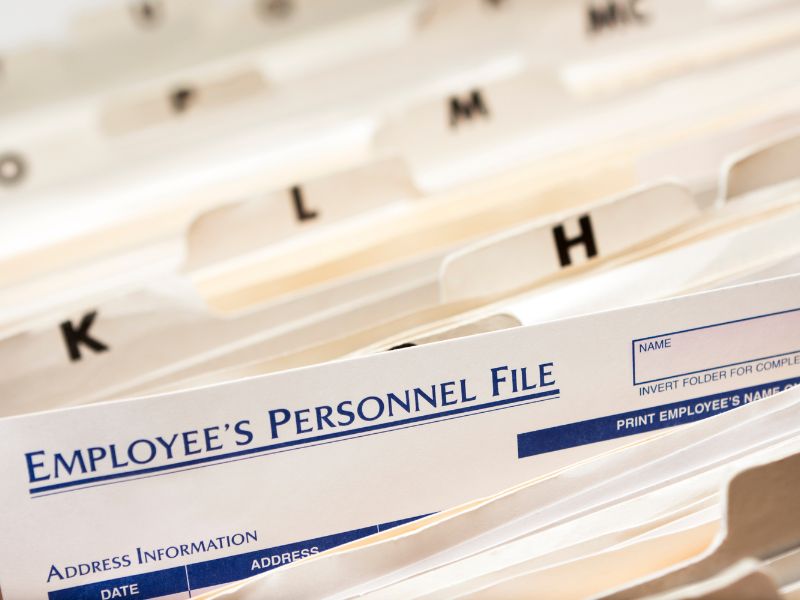When Does a Paper Trail Make Sense for Employee Records?
Your HR team is responsible not only for hiring and managing your staff, but also maintaining personnel files to meet applicable regulations. It’s important to set aside space in a secure facility so that you can restrict access to employee data. Electronic recordkeeping recommended by the best HR services provider can also help you eliminate security issues and reduce environmental waste.
At Ravix Group, our outsourced HR consultants helps companies set up policies and procedures for employee files. Electronic recordkeeping gives your company more space, eliminates unnecessary environmental waste, and helps you save time when searching for a specific document. Our experts can also help you determine when you need to keep paper copies and how long you need to store them.
What Records Should You Keep and for How Long?
The following list provides samples of employee records you need to maintain per federal employment laws. While you need to keep documents for the indicated length of time, you can avoid liability issues by discarding them afterward. This can help prevent legal issues and save storage space.
Maintain the following records for the indicated retention period:
- Recruiting documents, such as job applications, resumes, and hiring tests: 1 year
- Form I-9: 3 years from the hire date or 1 year following termination (choose the later date)
- Payroll information such as promotion, wage, and timekeeping records: Maximum of 4 years (may vary by document)
- W-4s: 4 years following tax filing
- Checkup or physical exam results: 1 year
- Drug test results: 1 year
- FMLA documentation:3 years following the end of a leave
- Termination records: 1 year after last day
- Reasonable accommodation request: 1 year
- Performance reviews: 2 years
- Benefit plans: 1 year after termination (of plan, not employment)
Maintaining Employee Records
Now you know how long you’ll need to keep different records. It’s also important to understand the different ways to maintain employee files. Here are the three basic options for keeping employee files updated and on hand:
- Physical Records: For smaller companies with few employees, it might make sense to stick with paper forms and physical files. Even then, this can create a lot of paperwork and take up space you could use for other purposes. Additionally, over the years, the paper trail will have a detrimental impact on the environment.
- Spreadsheets: Spreadsheets give you a digital record of various employee files. They are also easier to maintain and share. You can quickly back up spreadsheet files for disaster recovery. However, spreadsheets also have limitations. For example, as your organization grows and spreadsheets become more complicated, you may see more errors introduced.
- HRIS: A human resources information system can give you dynamic employee records you can update with the touch of a button. These systems are typically dedicated to the life cycle of an employee from the initial recruiting process through to promotions and termination or retirement. Cloud-based employee record systems give your HR team the freedom they need to work anytime, anywhere, without sacrificing security or jeopardizing the privacy of individual employees. The best outsourced HR consultancy in the Bay Area will vouch for how easy it is to track down files online.
Should you opt for external HR consulting services? If you want to train existing staff members on best practices for employee records or help getting your process off the ground, Ravix Group can help.
Ravix Group has experts who can get your Silicon Valley or Bay Area company ready to meet local and national requirements. Contact us online or call us at 408 216 0656 to discuss ways to improve your employee recordkeeping.

